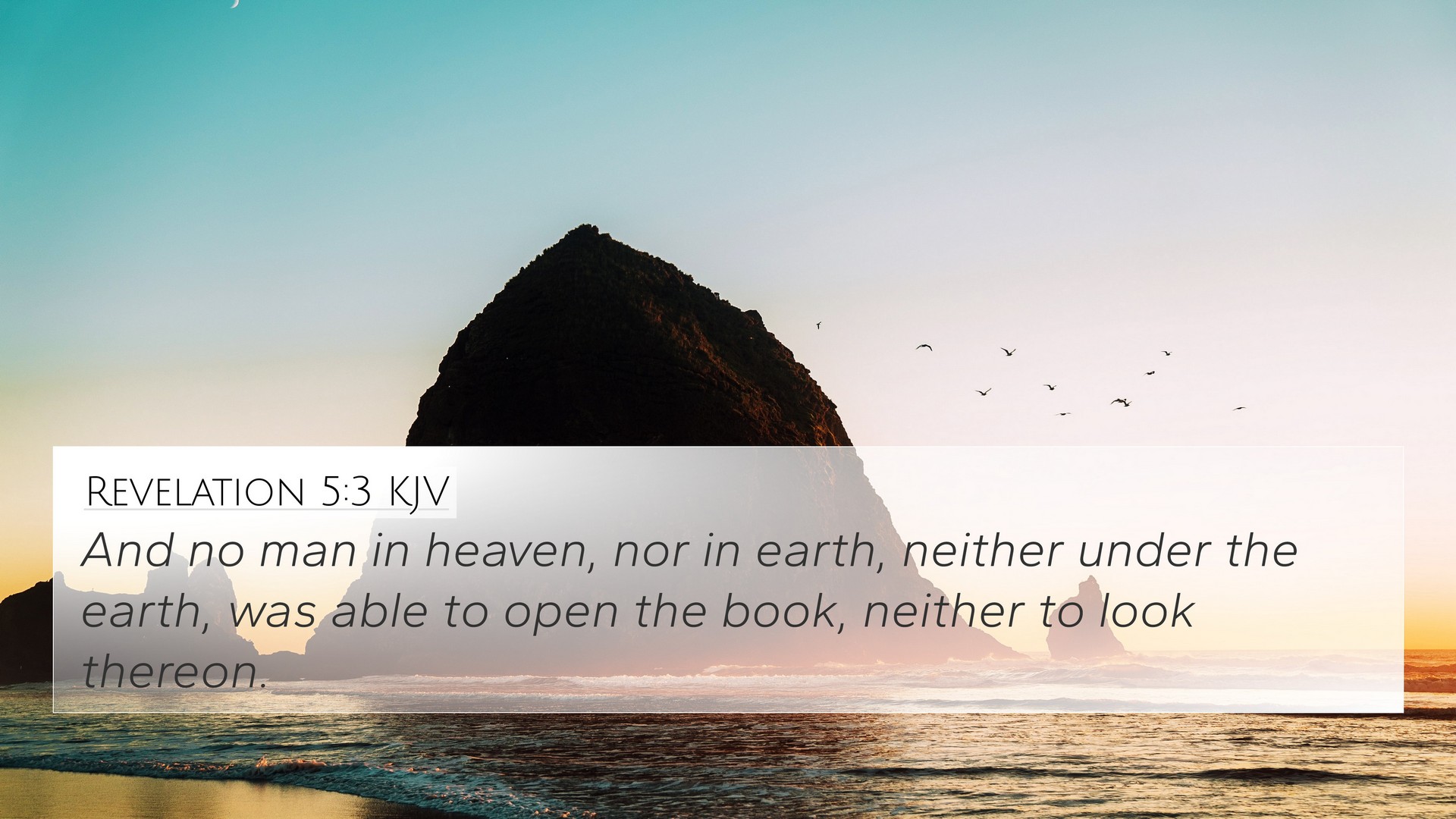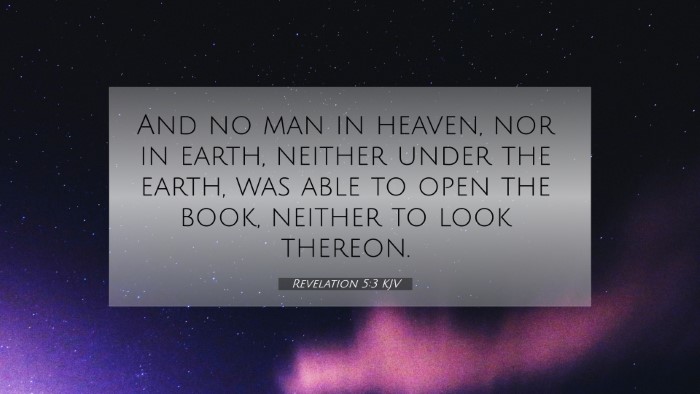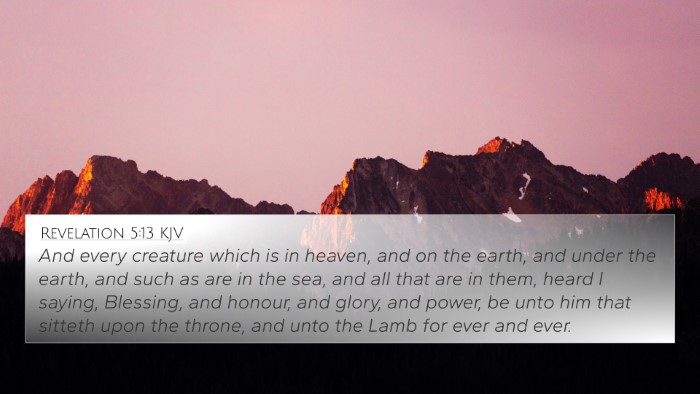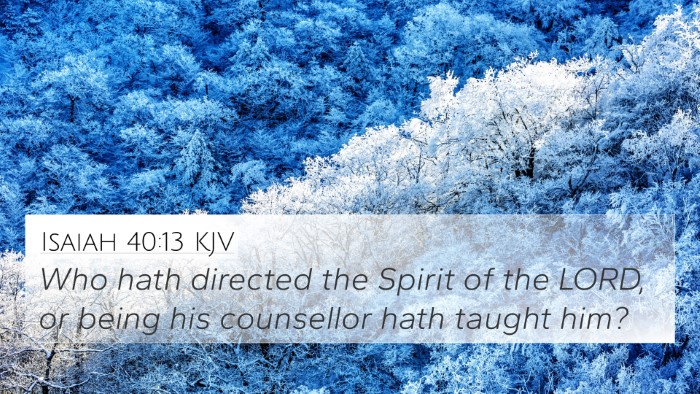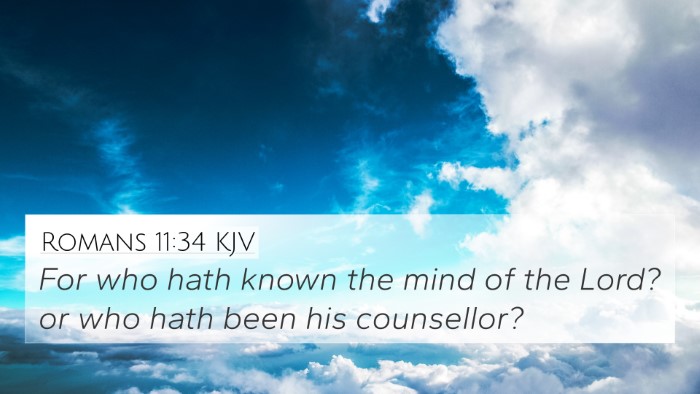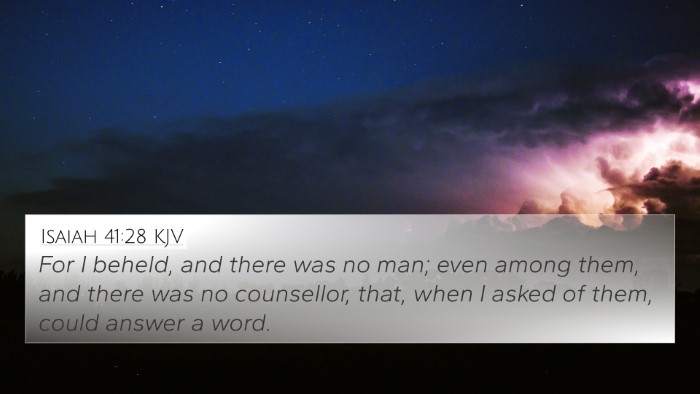Understanding Revelation 5:3
Revelation 5:3 states: "And no man in heaven, nor in earth, neither under the earth, was able to open the book, neither to look thereon."
Overview of the Verse
This verse paints a vivid picture of the inability of all beings—celestial, terrestrial, and infernal—to open the scroll held by the One seated on the throne. The scroll symbolizes the unfolding of God's plan for humanity and the history of the world. The absence of any worthy being emphasizes a profound need for a mediator.
Theological Significance
The inability of "no man" symbolizes the limited capacity of humanity to achieve redemption and unlock the mysteries of God’s will without divine intervention. It highlights the work of Christ as the only one who can break the seals and institute God's plan.
Insights from Commentaries:
-
Matthew Henry: Henry notes that this passage illustrates the solemn approach to heavenly matters, where even the mightiest beings, when faced with God's decrees, find themselves powerless. The scroll can be seen as representing the prophecies and judgments to come.
-
Albert Barnes: Barnes emphasizes the idea of worthiness, particularly implying that while man cannot fulfill the requirements to bring about God’s purposes, the Lamb (Jesus Christ) is the one destined to cleanse and redeem.
-
Adam Clarke: Clarke describes the scroll as sealed with seven seals, which indicates its completeness and the significance of what is contained within. The seals represent divine mystery, and the inability to open it underscores humanity's limitations.
Cross-References to Revelation 5:3
To gain a deeper understanding of Revelation 5:3, it is beneficial to explore related scriptures. Here are some notable cross-references:
- Hebrews 2:14-15: Discusses Christ’s victory over death, emphasizing His unique status.
- Revelation 5:5: Introduces the Lion of the tribe of Judah as worthy to open the seals.
- Revelation 1:18: Christ’s authority over death and the grave is affirmed here.
- Isaiah 53:3-5: Prophecies about the suffering servant, hinting at the ultimate sacrifice of Christ.
- John 14:6: Jesus declares Himself as the way, truth, and life, showcasing His role as mediator.
- Romans 8:34: Affirms that Christ is at the right hand of God interceding for us.
- 1 Timothy 2:5: Highlights the necessity of Jesus as the mediator between God and man.
Thematic Connections
This verse connects to several themes in scripture, such as divine authority, redemption, and the role of Christ as mediator. The stark contrast between the inability of creation to open the scroll and the ultimate ability of Christ: these inter-biblical dialogues enrich our understanding.
Practical Applications
As believers, understanding Revelation 5:3 prompts us to recognize our limitations while simultaneously acknowledging the sufficiency of Christ. It encourages reliance on Him for revelation, guidance, and understanding of God’s Word.
Using Cross-References for Bible Study
Utilizing tools for Bible cross-referencing can enhance one’s study and comprehension. Here are some methods:
- Bible Concordance: A helpful tool to find where specific words and themes appear throughout scripture.
- Bible Cross-Reference Guide: Guides that highlight connections among verses, offering deeper insights.
- Cross-Reference Bible Study: Engaging in studies that focus on comparing related verses for a fuller interpretation.
- Bible Chain References: Following a chain of references that link related concepts throughout the Bible.
Conclusion
Revelation 5:3 serves as a pivotal verse that asserts the authority of Christ and the emphasis on divine ability over human limitation. Through comparative Bible verse analysis and thematic connections, one gains a comprehensive understanding of the critical attributes of Jesus Christ as the Lamb, worthy to reveal God’s plan for salvation.
